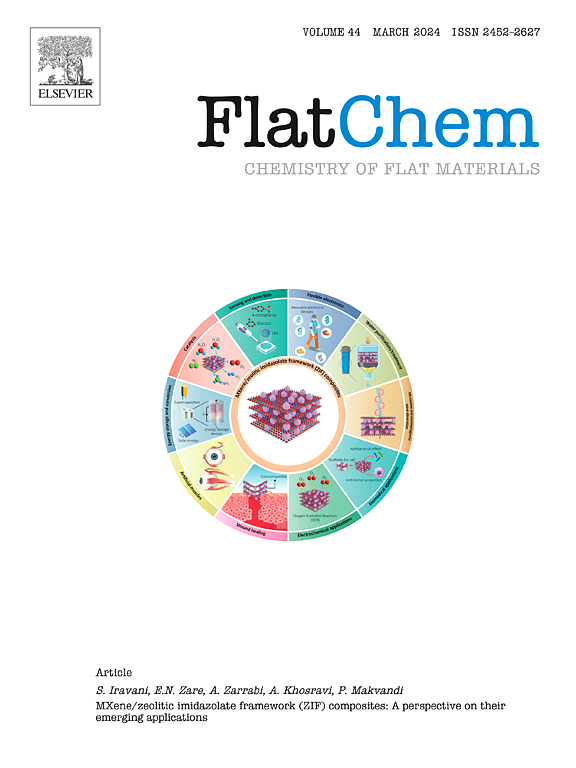Effect of anionic, cationic and non-ionic surfactants on graphene nanoplatelet enhanced organic phase change material: A comparative thermal performance evaluation
IF 6.2
3区 材料科学
Q2 CHEMISTRY, PHYSICAL
引用次数: 0
Abstract
Phase change materials (PCM)s is the predominant substance that facilitates thermal energy storage (TES) in the form of latent heat. PCMs stores and releases thermal energy during phase transition, making it expedient to manage temperature fluctuation in TES systems. However, the application of PCMs in various industrial fields is limited due to their low thermal conductivity and low melting enthalpy. The inclusion of thermally conductive nano-fillers resolves the issue of low thermal conductance of PCMs. However, the effectiveness of nano-fillers inclusion is subjected to uniform dispersion without any agglomeration. Surfactants is required to enhance the overall effectiveness and performance of PCM nano composites by preventing phase separation and preserving the stability of the nano-filler that are dispersed in PCM matrix. RT44HC of organic PCM is selected has the advantage of high melting enthalpy (250 J/g) on the contrary suffers from poor thermal conductivity. Herein, this research investigates the thermal performance of graphene nanoplatelets (GNP) nano-filler dispersed in RT44HC with anionic, cationic, and non-ionic surfactants to evaluate their performance in overcoming the issue of agglomeration. In this regard, four surfactants: sodium dodecyl benzene sulfonate (SDBS) as an anionic surfactant, cetyl tri-methyl ammonium bromide (CTAB) as a cationic surfactant, Tween 60 and gum Arabic as a non-ionic surfactant were investigated at varied weight fractions of 0.5 %, 0.7 %, and 1.0 % equivalent to that of nano-filler. A two-step synthesis with extensive ultrasonication was applied to reach a homogeneous mixture. The result shows that utilising GNP and SDBS surfactant in RT44HC demonstrates 103.33 % increase in thermal conductivity of PCM from 0.210 W/(m·K) to 0.427 W/(m·K). The improvement in thermal conductivity owing to well-developed thermal network channels facilitating thermal conductance. The melting enthalpy of RT44HC does not affect severely as it reduces 3.63 % for the optimum thermal conductivity nanocomposite. Furthermore, UV–Vis results were tremendous, as GNP lowered the light transmittance from 94.19 % to 17.77 %, indicates high absorbance capability. After 500 thermal cycles, the melting enthalpy remains stable within ±7.5 % uncertainty, indicating that the composite is reliable for long-term performance. Research highlights the RT44HC/GNP composite, with surfactant enhancement, as a promising candidate for medium-temperature solar thermal applications.

阴离子、阳离子和非离子表面活性剂对石墨烯纳米板增强有机相变材料的影响:热性能比较评价
相变材料(PCM)是促进潜热形式的热能储存(TES)的主要物质。相变介质在相变过程中储存和释放热能,使其易于管理TES系统中的温度波动。然而,由于其低导热系数和低熔化焓,PCMs在各种工业领域的应用受到限制。导热纳米填料的加入解决了PCMs导热系数低的问题。然而,纳米填料包合的有效性受制于均匀分散而无团聚。表面活性剂通过防止相分离和保持分散在PCM基体中的纳米填料的稳定性来提高PCM纳米复合材料的整体有效性和性能。选用有机PCM的RT44HC,其熔融焓高(250 J/g),导热性差。本文研究了石墨烯纳米片(GNP)纳米填料与阴离子、阳离子和非离子表面活性剂分散在RT44HC中的热性能,以评估其克服团聚问题的性能。在这方面,研究了四种表面活性剂:十二烷基苯磺酸钠(SDBS)作为阴离子表面活性剂,十六烷基三甲基溴化铵(CTAB)作为阳离子表面活性剂,Tween 60和阿拉伯胶作为非离子表面活性剂,其质量分数分别相当于纳米填料的0.5%,0.7%和1.0%。采用大范围超声两步合成法得到均匀的混合物。结果表明,在RT44HC中加入GNP和SDBS表面活性剂后,PCM的导热系数从0.210 W/(m·K)提高到0.427 W/(m·K),提高了103.33%。由于发达的热网通道促进了导热性,从而提高了导热性。RT44HC的熔融焓对纳米复合材料的热导率影响不大,降低了3.63%。此外,当GNP将透光率从94.19%降低到17.77%时,UV-Vis效果显著,表明具有较高的吸光能力。500次热循环后,熔融焓稳定在±7.5%的不确定性范围内,表明复合材料具有可靠的长期性能。研究强调,表面活性剂增强的RT44HC/GNP复合材料是中温太阳能热应用的有前途的候选材料。
本文章由计算机程序翻译,如有差异,请以英文原文为准。
求助全文
约1分钟内获得全文
求助全文
来源期刊

FlatChem
Multiple-
CiteScore
8.40
自引率
6.50%
发文量
104
审稿时长
26 days
期刊介绍:
FlatChem - Chemistry of Flat Materials, a new voice in the community, publishes original and significant, cutting-edge research related to the chemistry of graphene and related 2D & layered materials. The overall aim of the journal is to combine the chemistry and applications of these materials, where the submission of communications, full papers, and concepts should contain chemistry in a materials context, which can be both experimental and/or theoretical. In addition to original research articles, FlatChem also offers reviews, minireviews, highlights and perspectives on the future of this research area with the scientific leaders in fields related to Flat Materials. Topics of interest include, but are not limited to, the following: -Design, synthesis, applications and investigation of graphene, graphene related materials and other 2D & layered materials (for example Silicene, Germanene, Phosphorene, MXenes, Boron nitride, Transition metal dichalcogenides) -Characterization of these materials using all forms of spectroscopy and microscopy techniques -Chemical modification or functionalization and dispersion of these materials, as well as interactions with other materials -Exploring the surface chemistry of these materials for applications in: Sensors or detectors in electrochemical/Lab on a Chip devices, Composite materials, Membranes, Environment technology, Catalysis for energy storage and conversion (for example fuel cells, supercapacitors, batteries, hydrogen storage), Biomedical technology (drug delivery, biosensing, bioimaging)
 求助内容:
求助内容: 应助结果提醒方式:
应助结果提醒方式:


